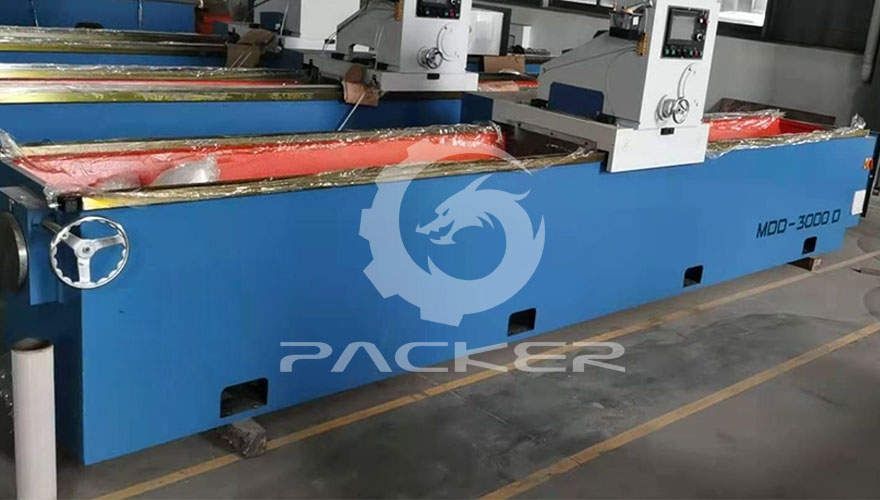 English
English Español
Español  Português
Português  русский
русский  Français
Français  日本語
日本語  Deutsch
Deutsch  tiếng Việt
tiếng Việt  Italiano
Italiano  Nederlands
Nederlands  ภาษาไทย
ภาษาไทย  Polski
Polski  한국어
한국어  Svenska
Svenska  magyar
magyar  Malay
Malay  বাংলা ভাষার
বাংলা ভাষার  Dansk
Dansk  Suomi
Suomi  हिन्दी
हिन्दी  Pilipino
Pilipino  Türkçe
Türkçe  Gaeilge
Gaeilge  العربية
العربية  Indonesia
Indonesia  Norsk
Norsk  تمل
تمل  český
český  ελληνικά
ελληνικά  український
український  Javanese
Javanese  فارسی
فارسی  தமிழ்
தமிழ்  తెలుగు
తెలుగు  नेपाली
नेपाली  Burmese
Burmese  български
български  ລາວ
ລາວ  Latine
Latine  Қазақша
Қазақша  Euskal
Euskal  Azərbaycan
Azərbaycan  Slovenský jazyk
Slovenský jazyk  Македонски
Македонски  Lietuvos
Lietuvos  Eesti Keel
Eesti Keel  Română
Română  Slovenski
Slovenski  मराठी
मराठी  Srpski језик
Srpski језик
The working principle of the circular knife grinder
2023-08-29
The working principle of the circular knife grinder

A circular knife grinder is a machine used to sharpen circular knives, which are commonly used in various industries for cutting materials such as paper, textiles, plastics, and metals. The working principle of a circular knife grinder involves several steps to achieve accurate and precise sharpening:
Knife Mounting: The circular knife to be sharpened is securely mounted onto the grinder. The knife is typically held in place by a combination of clamps, magnets, or fixtures to ensure stability during the sharpening process.
Rotation: The circular knife is rotated to expose the cutting edge that needs to be sharpened. This rotation can be manual or motorized, depending on the design of the grinder.
Grinding Wheel: The grinder is equipped with a grinding wheel that is specifically designed for sharpening circular knives. This grinding wheel is usually made of abrasive material and comes in different shapes and sizes to match the curvature of the circular knife's cutting edge.
Adjustments: The grinder allows for adjustments in terms of angle, depth, and positioning of the grinding wheel. These adjustments are critical to achieving the desired sharpness and edge geometry for the circular knife.
Sharpening Process: The circular knife is brought into contact with the rotating grinding wheel. As the knife and grinding wheel interact, the abrasive surface of the wheel removes material from the cutting edge of the knife. This process reshapes the edge, removes any dull or damaged areas, and creates a sharp cutting edge.
Cooling and Lubrication: The sharpening process generates heat, which can potentially affect the hardness and temper of the knife's edge. To prevent overheating and maintain the knife's structural integrity, a coolant or lubricating fluid is often applied during the sharpening process. This fluid also helps in removing debris and ensuring a smoother grinding action.
Fine-tuning: Depending on the specific requirements of the application, the grinder operator may perform additional fine-tuning to achieve the desired level of sharpness. This might involve making slight adjustments to the angle, pressure, or other parameters.
Inspection: After sharpening, the circular knife is carefully inspected to ensure that the cutting edge is uniform, sharp, and free from defects. Any imperfections are addressed through additional sharpening or adjustments.
Deburring and Polishing: Once the knife's cutting edge is properly sharpened, any burrs or rough edges resulting from the grinding process are removed. This can involve using polishing tools or honing stones to achieve a smooth and clean finish.
Testing: The sharpened circular knife might undergo testing to ensure that it meets the required cutting performance standards. This could involve cutting test materials or performing quality checks based on the specific industry standards.
In summary, the circular knife grinder works by rotating the circular knife against a specialized grinding wheel. The grinding process removes material from the knife's cutting edge, reshaping and sharpening it to achieve the desired level of sharpness and edge geometry. Adjustments, cooling, and fine-tuning are essential steps to ensure accurate and precise sharpening results.



